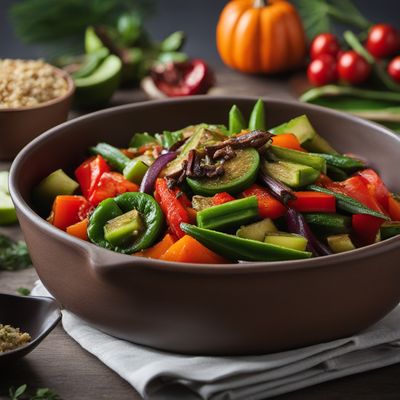
Ingredient
Garden nasturtium pods
"The Edible Gems: Exploring the Delights of Garden Nasturtium Pods"
Garden nasturtium pods, also known as "poor man's capers," are the immature seed pods of the nasturtium plant. These pods are small, round, and come in various shades of green and yellow. They have a crisp and crunchy texture, similar to radishes, and a distinct peppery flavor that adds a zesty kick to any dish. The pods are often harvested when they are still tender and immature, as they become more fibrous and bitter as they mature. Their vibrant colors make them visually appealing, making them a popular choice for garnishing plates and adding a pop of color to culinary creations.
Origins and history
Nasturtiums are native to South America and were brought to Europe by Spanish conquistadors in the 16th century. They were initially cultivated for their ornamental value but soon gained popularity as a culinary ingredient. In traditional medicine, nasturtiums were used to treat various ailments, including respiratory infections and digestive issues. Today, garden nasturtium pods are enjoyed worldwide for their unique flavor and aesthetic appeal.
Nutritional information
Garden nasturtium pods are low in calories and rich in vitamins A and C. They also contain antioxidants and have antibacterial properties, making them a nutritious addition to any diet.
Allergens
Nasturtiums are generally considered safe for consumption and are not known to cause allergies. However, individuals with a known allergy to plants in the Brassicaceae family, such as mustard or radish, should exercise caution.
How to select
When selecting garden nasturtium pods, look for firm and plump pods with vibrant colors. Avoid pods that are wilted, discolored, or have signs of mold. Freshness is key, so choose pods that have a crisp texture and a bright appearance.
Storage recommendations
To maintain the freshness and quality of garden nasturtium pods, store them in a perforated plastic bag or airtight container in the refrigerator. They can stay fresh for up to a week. Avoid washing the pods until ready to use, as excess moisture can cause them to spoil more quickly.
How to produce
Garden nasturtiums are relatively easy to grow, making them a great addition to any home garden. They thrive in well-drained soil and prefer full sun or partial shade. Sow the seeds directly into the soil after the last frost, and they will germinate within a couple of weeks. Regular watering and occasional fertilization will help the plants flourish. Harvest the pods when they are still young and tender for the best flavor.
Preparation tips
Before using garden nasturtium pods, rinse them gently under cold water to remove any dirt or debris. The pods can be enjoyed raw, added to salads for a peppery crunch, or pickled to create a tangy condiment. They can also be stuffed with various fillings or used as a garnish for soups, seafood dishes, or cocktails. Experiment with different culinary techniques to explore the versatility of these pods.
Culinary uses
Garden nasturtium pods are commonly used in salads, where they add a peppery bite and a burst of color. They can also be used as a unique garnish for appetizers, main dishes, or cocktails. Additionally, the pods can be pickled to create a flavorful condiment that pairs well with cheeses, charcuterie, or sandwiches.
Availability
Garden nasturtium pods are commonly available in regions with a temperate climate, including North America, Europe, and parts of Asia. They can be found in specialty grocery stores, farmers markets, or grown in home gardens.

